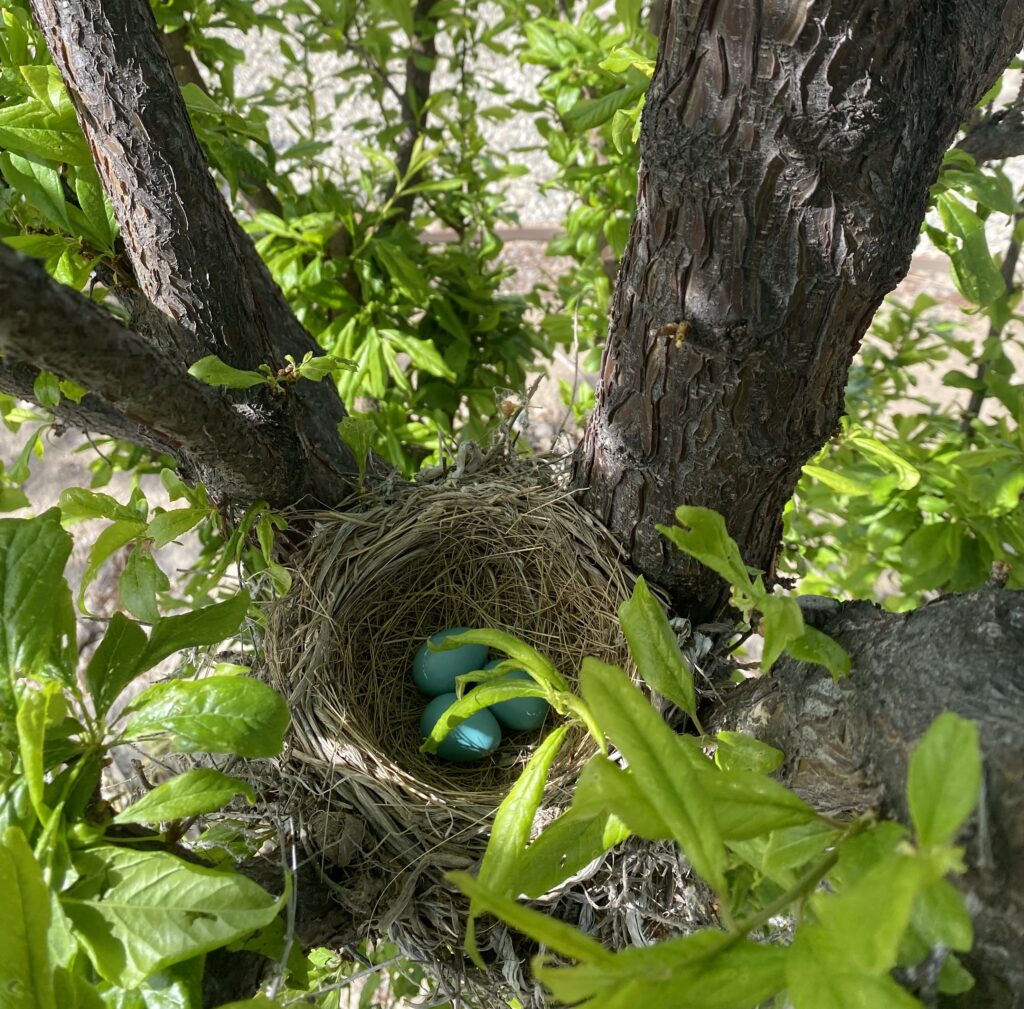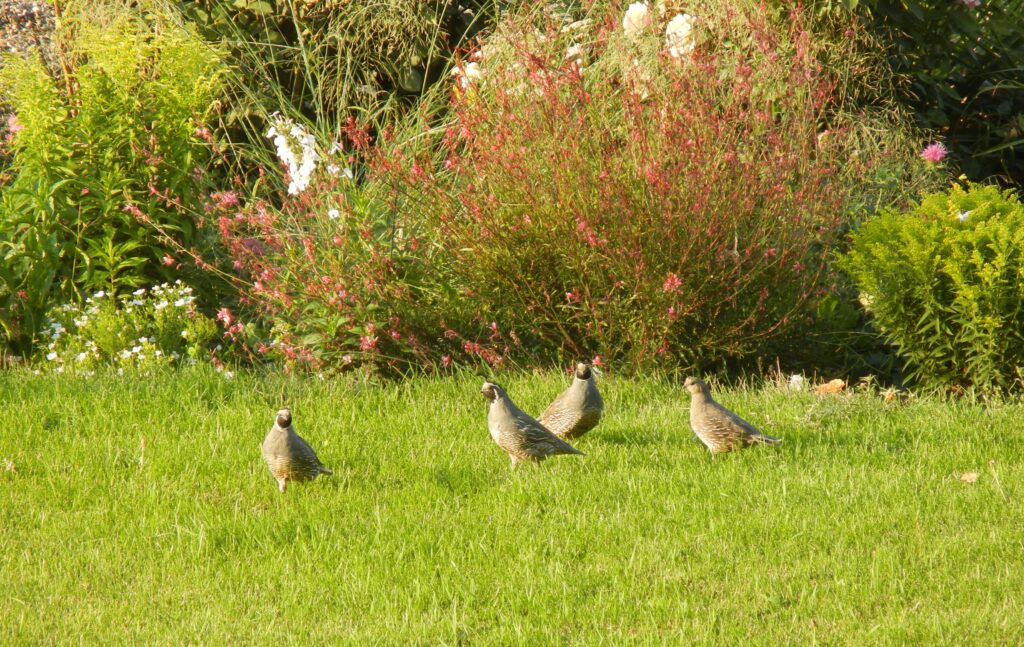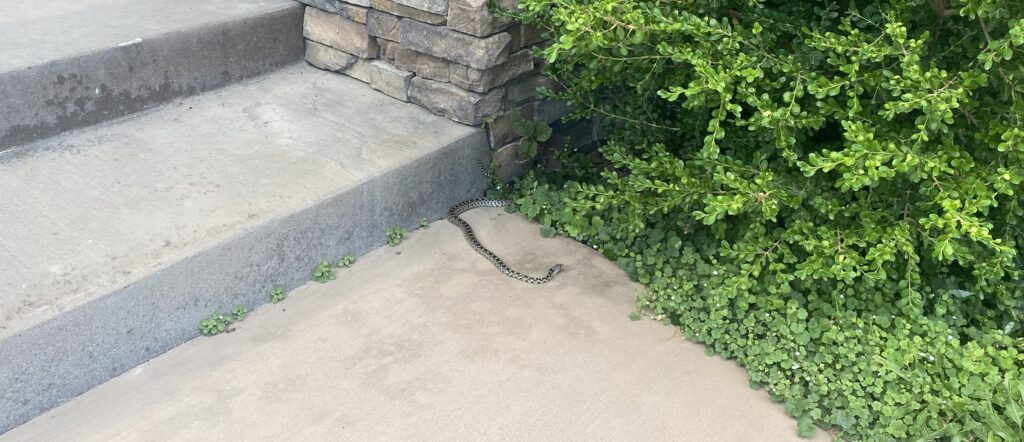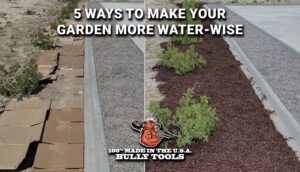Beneficial Animals and a Healthy Garden

Let’s face it, animals are destructive to gardens. Deer eat plants and chew off bark. Rabbits nibble off the petals of your annuals. Birds like woodpeckers can tear up wood siding or trees. Some snakes are poisonous. Aphids literally suck the life out of roses. Earwigs, spider mites, worms, grubs, and so many other pests destroy vegetable, fruit, and ornamental plants. For many gardeners there are animals we want to avoid attracting to our yard and do our best to deter them if they do show up.
Fortunately there are many beneficial animals you can attract to your garden. These animals often eat destructive insects or rodents, reducing your need for deterrents or even chemicals. They add life and interest to your garden or property—yes, even the beneficial snakes and spiders. And while there’s no foolproof way to keep your plants in perfect condition if you do attract these creatures, hopefully the benefits outweigh the drawbacks.
Birds
Many birds eat a variety of insects, including aphids, mosquitoes, spiders, grubs, slugs, and other bugs that may not be welcome in your yard or garden. By attracting birds with a thoughtfully planted garden, they are encouraged to take advantage of natural food sources, granting the benefit of lowering or eliminating the need for insecticides.
Many gardeners will try to attract birds to their yards by putting out birdseed, but you don’t have to do that to attract birds. Birds require a safe place to rest, so having trees is a must, large shrubs at the least. It’s important to have a variety of deciduous and evergreen trees and shrubs that provide year-round cover and protection. Trees that produce fruit, such as serviceberry, crabapple, chokecherry, oaks, holly, plum, dogwood, elderberry, and others are all good choices. Even better, trees native to your area are the best option because they are the trees your local birds already rely on.

Birds, of course, will eat the seeds straight from your flowering plants. They love seeds from plants such as sunflowers, coneflower, black-eyed susan, daisy, aster, marigold, cornflower, zinnia, amaranth, cosmos, gomphrena (globe amaranth), and really any native that grows well in your area. There are also other plants such as Virginia creeper that produce berries that birds love.
If you’re a fan of hummingbirds, the plants may be different, but the principles of attracting them compared to seed or fruit eating birds is the same. Choose plants such as agastache, butterfly bush, honeysuckle, hardy hibiscus, trumpet vine, and others with trumpet-shaped petals to attract these little birds to your garden.

This agastache (hummingbird mint) and honeysuckle are frequented by the local hummingbirds:

A side benefit of inviting birds to your garden are their visual and behavioral interest. Watching quail raise their little brood of babies is fun as they run around a garden. Finding a bird’s nest in your tree (or on the ground for killdeer) is a treat. While some birds can be pests, on the whole, allowing birds to call your garden home is a welcome addition to its beauty and usefulness.



Amphibians and Snakes
The typical response to finding a snake in your flowerbed is to get rid of it immediately. And it’s definitely important it to learn which snakes where you live are poisonous so you can deal with them as needed.
However, it’s also worth it to learn to live with the non-venomous variety (if you can—there’s no shame in having a phobia). They hunt rodents like mice, rabbits, voles, gophers, and others, as well as many insects. Most non-venomous snakes may surprise you if you’re working in your garden where there are rocks or green growth to hide them. But they’re unlikely to harm you if you do happen on one. If you don’t attempt to move it, it will likely move away on its own.

Frogs, toads, and salamanders are also excellent garden hunters and eat large quantities of insects that may be plaguing you and your garden. Since they’re carnivores they won’t eat your plants, but they will eat beetles, caterpillars, grasshoppers, slugs, flies, and moths. You can encourage them to stay in your garden by having ready water sources, where they can also find food. To help them overwinter and protect them from predators, provide compost heaps and leaf piles, or wood/rock piles.
Spiders
Yes, even spiders can improve the health of your garden because they eat insects, and fortunately they mostly the pests you don’t want like aphids, wasps, beetles, mosquitoes, and flies, eating as many as one per day, so having more spiders means more bug control. Spiders work hard to keep the harmful insects under control—and the added benefit is that they keep these same bugs from harming beneficial insects and well as from stinging you. They come out of dormancy in the spring about the same time as other insects and get to work immediately, and continue throughout the growing season. Fortunately these helpful garden spiders are not aggressive and won’t seek to bite you unless you press against them.
You’ve probably seen the typical black and yellow garden spider, but of course there are others you’ll see in your landscape that may be venomous. It’s worth learning the difference between the types so you can remove the non-beneficial and leave the beneficial kind to give you a helping hand.
You can attract spiders to your garden simply by having full plant beds—which have already attracted their prey. Using mulch, rocks, and grass clippings provide a safe home for beneficial spiders like wolf spiders, which hunt from their garden crevices instead of building webs.
Beneficial Insects
The majority of beneficial insects are as classified as pollinators: honeybees, bumblebees, butterflies, moths, dragonflies, leaf cutter bees, mason bees, and many others. Pollinators are important for anything that needs to create a fruit, seed, or nut to propagate. By attracting pollinators to your garden you are making your garden ecosystem more productive and healthier. There are also insects like the praying mantis and ladybugs that are excellent predators for destructive insects.
Of course the best way to attract pollinators is to grow what they love, to grow a variety of plants, and to have blooms available for them as early in the season as possible, clear into the end of the growing season. This may mean learning more about what grows best in your area, and planting trees, perennials, annuals, and vegetables that grow in stages across the growing seasons. For example:

- Spring – blooming trees, tulip, daffodil, lungwort, peony, lilac, bleeding heart, bellflower, bee balm, allium, columbine, sweet peas
- Summer – Catmint, Russian sage, coneflower, milkweed (an important food for Monarch butterflies), dianthus, phlox, black-eyed susan, hyssop, spirea, lavender, butterfly bush, yarrow, as well as annuals such a petunia, zinnia, sunflower, alyssium, and snapdragon
- Autumn – Aster, chrysanthemum, tall sedum, goldenrod, joe pye weed

And there are many more. The more variety, the better it will be for your garden pollinators—and for your garden.



Insects also need a water source. Bees and butterflies benefit from having a dish, fountain, or pond for access to water.
It’s important to know the best methods for destructive insect control in order to prevent beneficial insect casualties. For example, neem oil is a popular method for controlling aphids, but spraying it at the wrong time can also kill bees. Always check pesticide (whether herbicide or insecticide) labels to learn the risks of killing beneficial insects. Often changing when you spray—such as early morning or in the evenings when they’re less active—can help protect pollinators.

Co-existing with Local Animals
You could think of it as animals invading your garden territory, but in truth where you live is where they live, too. By attracting the kinds of animals that will help stabilize your garden ecosystem, it will be more balanced and healthy. While that means your garden may suffer from some damage, by attracting birds and beneficial insects to your garden, it will reduce your need for pesticides and provide a more lively atmosphere.
If you’d like to learn more about helping animals to overwinter your garden, read “Fall vs Spring Garden Cleanup” for more information.










